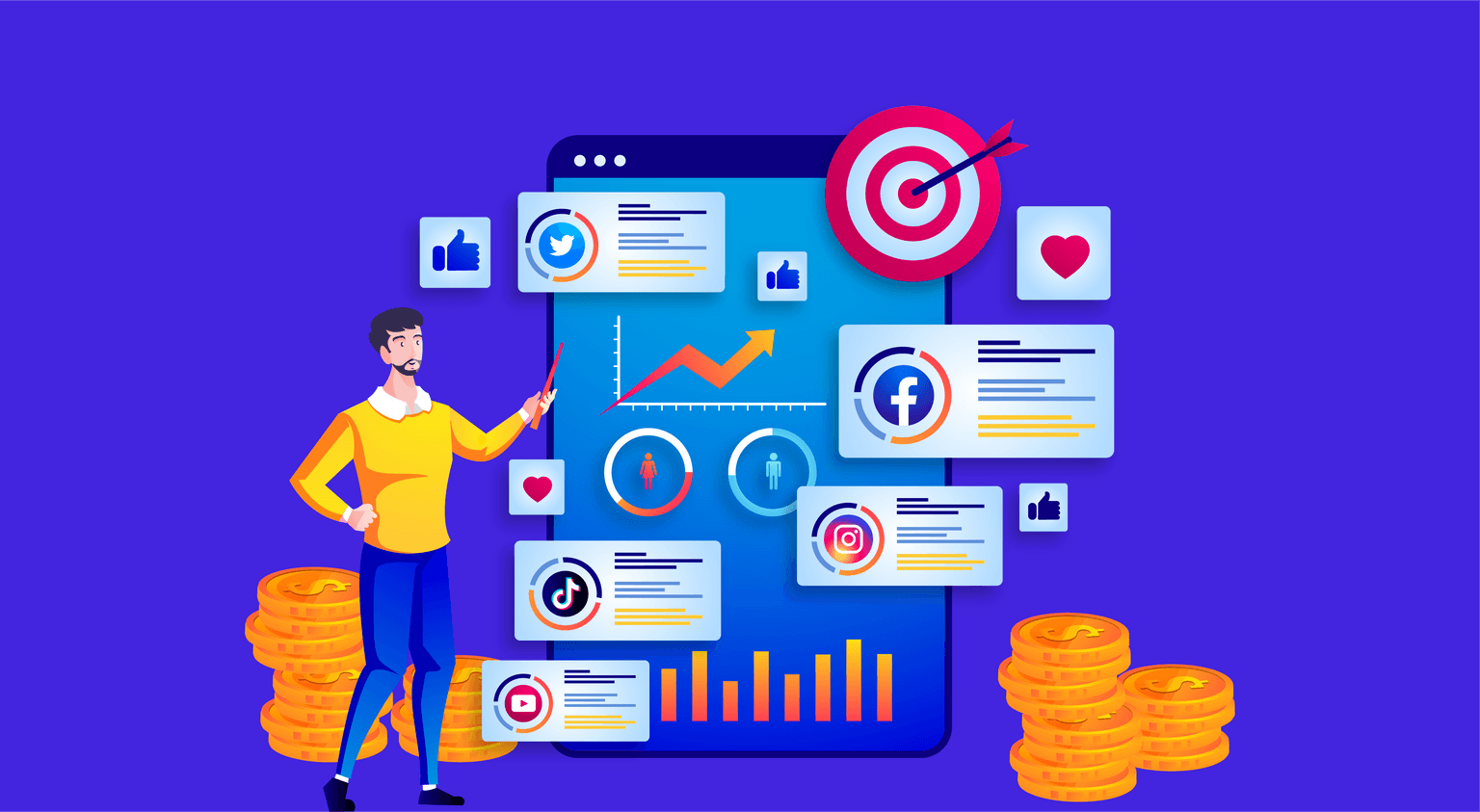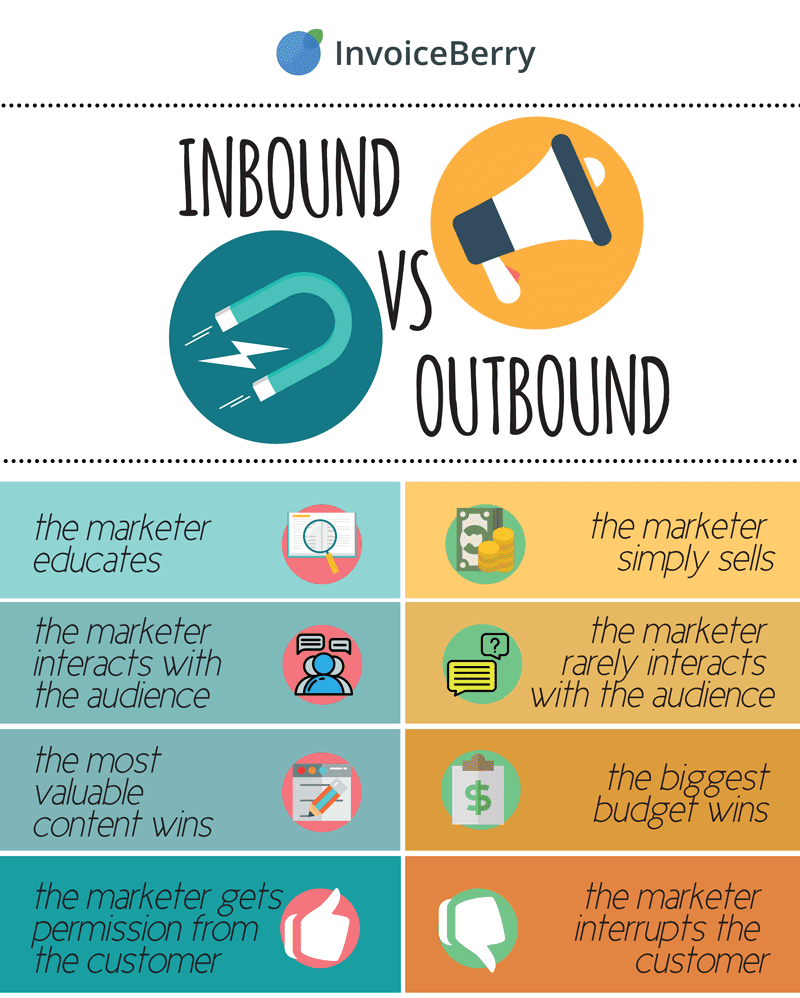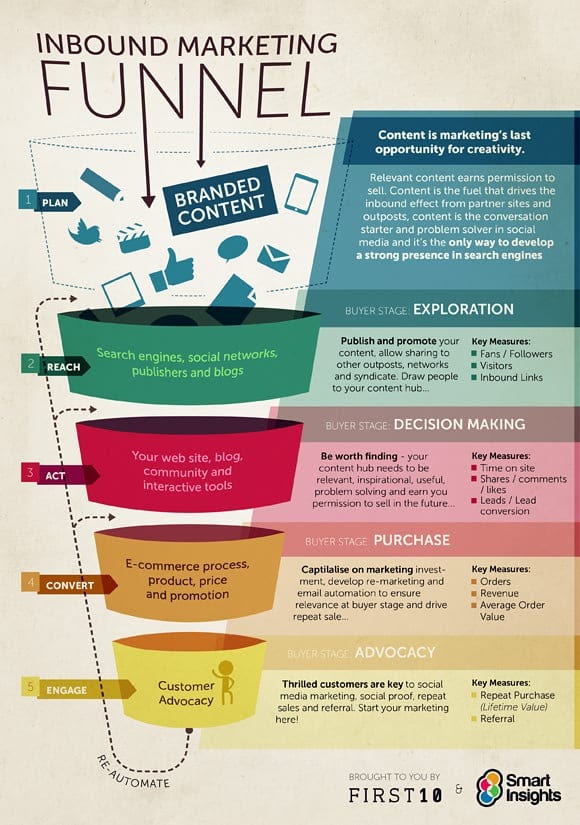
Table of Contents
- What Is Inbound Marketing?
- Inbound Marketing vs Outbound Marketing
- How Does Inbound Marketing Work?
- Why Is Inbound Marketing Important?
- Key Takeaways
- Conclusion
- FAQs
Marketing is the backbone of all organizations, particularly the customer-centric ones. With the growth in digital marketing, the scope of marketing has expanded to infinite dimensions. You can develop as many innovative ways to market and promote your products as your creative potential allows. Therefore, quite rightly, many companies have a dedicated marketing team and a well-thought-out marketing strategy for their businesses. Companies no longer shy away from allocating substantial funds to their marketing efforts since they know the long-term benefits they are going to yield. This is also the reason for the rise in the number of marketing agencies or digital marketers who offer a variety of services to the companies.
Today, brands adopt a number of marketing methodologies, strategies, and channels to reach their target audience offline as well as online. A lot of effort goes into developing a holistic marketing plan for a brand. This article throws light on a popular and effective method of marketing, which is inbound marketing, and answers the question, “What is inbound marketing?”
What Is Inbound Marketing?
Inbound marketing is of particular importance in the realm of digital marketing. It is a marketing methodology that focuses on building long-term, trustworthy, and meaningful connections with customers. It does not look at customers as only cash cows but values and empowers them to reach their respective goals at any stage in their journey with you.
Inbound marketing simply means to draw the potential customers and visitors in, instead of outwardly pushing your product or service onto the target audience. The term ‘Inbound marketing’ was coined by HubSpot in 2006. It utilizes various pull marketing tactics such as content creation, events, search engine optimization (SEO), social media, and many more. The primary aim of inbound marketing is to make sure that the customers do not feel that they are being sold to, and that the content should provide them with some educational or entertainment value. When they connect with your company through such high-value content, it has a higher influence on their buying decisions.
Inbound Marketing vs Outbound Marketing
The difference between the two is understood in the name itself. While inbound marketing focuses on drawing the customers in, outbound marketing deals with outwardly pushing your products or services.

Inbound marketing utilizes owned and earned media to engage people in creative ways. Owned media spaces are those over which you have control. For example, your website, blog, social media pages, YouTube channel, etc. Here, you decide what to post, when to post, and how to post. Earned media, on the other hand, is the coverage you earn as a result of your efforts. It can be in the form of social media mentions, use of your brand motto, and online reviews. You don’t control earned media. Infact, it shows that people are liking your content or brand as a whole. Outbound marketing mostly deals with paid media. It includes social media advertising or paid emails. It can be effective but its influence on the customers is short-term.
How Does Inbound Marketing Work?
The basic principle of inbound marketing is to build long lasting and meaningful relationships with customers through valuable content creation. Customers can find themselves in different stages in the sales funnel. Each stage is resource-heavy and requires unique content to convince the customer to move ahead in the funnel. The more relevant content you provide, the more visitors you will attract and the more deals you will close.
Inbound marketing is a broad term which encompasses a wide range of tactics. It means using a combination of different online channels like SEO, blogs, social media posts, etc., in creative ways to attract users’ attention. It aims to boost organic leads, earned views, and drive quality traffic. The inbound methodology can be primarily divided into three basic steps: attracting the target audience, engaging and converting them into customers, and delighting customers. Each stage will require different forms and types of content.
Attract
This is the most important component of inbound marketing. To attract means to draw in the target audience with the help of relevant content and valuable conversations in which they will like to engage. This will build your brand’s reputation as a reliable guide or advisor. Such strategies are mainly associated with content creation and development. Creating and publishing content is the way to reach the target audience here. Content can be in the form of blogs, social media posts, product description, etc. For example, information about how your services can be useful, customer reviews, details about deals or discounts, etc.

Don’t forget to incorporate SEO strategies in your content to optimize it. For this, target specific keywords or phrases related to your products or services. This will allow your content or webpage to appear higher in the search engine rankings and be accessible to people who are looking for similar information.
Engage
Once you have drawn the right audience towards your brand, you need to engage them to retain their interest and form connections. This can be done by providing them with insights and solutions that address their issues and align with their goals. Enlighten them with information about the value your brand can provide them with. Always provide the customers with a solution, not just a product. This will ensure a win-win deal for both the brand and customers.
Delight
This means providing customers with the required support whenever needed to make a successful purchase so that they leave your site delighted and satisfied. The primary aim of such strategies is to ensure that the customers are satisfied and happy after the purchase. These include the sales representatives and other team members becoming experts or mentors to customers and assisting them in their purchase journey.
Brands can incorporate chatbots and surveys at every stage of the funnel to encourage and request feedback from customers. Social media is also an important way to understand your customers. Increase your following by posting relevant content and engaging the users in conversations they are interested in. A delighted customer becomes a brand promoter, so handle all interactions, even those that give nothing to you in return, with care.
Why Is Inbound Marketing Important?
The importance of inbound marketing is evident from the following facts:
- 91% of customers go for brands that are authentic in their messaging.
- Inbound marketing generates three times more leads as compared to the traditional forms of marketing.
- 82% of marketers said that inbound marketing has led to positive ROI.
The benefits of an inbound marketing strategy are many. Let’s go through some of them in detail.
It is cost-effective
Given the enormous return in terms of a loyal customer base, the cost involved in inbound marketing is small. You just need a website and good, SEO-friendly content to get started. Work on building a following on social media by posting relevant content or partnering with influencers. This may take some time but the cost involved is minimal. Traditional methods like billboards, posters, or TV ads are relatively expensive. Moreover, these methods can increase sales but are not that useful in engaging the customers.
It is preferred by tech-savvy customers
The number of online shoppers is increasing at a fast pace each day. Even if they don’t make a purchase online, they look for information on the web. Thus, any marketing tactics employed by a brand must be directed towards them. Inbound marketing does just that. A report revealed that since the COVID-19 pandemic, digital media usage has increased by up to 26%. People are now spending more time on digital platforms to discover brands and make buying decisions.
It is authentic
Trust is considered the most important factor while making purchase decisions. Customers have become smarter and don’t believe anything and everything told to them. Thus, inbound marketing strategies focus on publishing content that is engaging and insightful for the consumers.
It is a multichannel strategy
Inbound marketing relies on a variety of sources to drive organic traffic, such as organic searches, social media shares, hyperlinking, and guest blogging. Thus, it reduces the reliance on a single channel, making the strategy more dynamic and the brand more reachable.
It forms meaningful connections
Inbound marketing focuses on giving customers the information they are looking for or are in need of, in creative ways. It avoids bombarding them with unwanted information or ads. It presents them with useful and reliable information which helps build trust and meaningful, long-lasting relationships.
Key Takeaways
- Inbound marketing is defined as the process of attracting, converting, and delighting customers. Through creating content relevant for visitors at different stages of the sales funnel, this method turns strangers into customers. It primarily involves building lasting relationships with customers through emails, social media engagement, and content marketing.
- Inbound marketing can be broadly understood by these three components: attract the right audience with useful content and conversations; engage them by offering solutions to their problems. Delight them in the whole process of buying so that they can have a memorable experience.
- Attracting strategies are basically related to developing high-quality content, which is useful for the target audience. Engagement strategies include giving solutions and insights to customers so that a meaningful connection is established between the brand and customer. Delighting strategies focus on keeping the customer delighted and satisfied with the purchase. It can be done by social listening, surveys, chatbots, and requesting feedback.
- Inbound marketing is all about owned and earned media, whereas outbound marketing is associated with paid media.
- The benefits of inbound marketing are immense. It is a cost-effective strategy, which provides authentic and high-value content to consumers. It is generally preferred by the tech-savvy generation and provides a multichannel approach of marketing and promoting a brand. Most importantly, it forms meaningful relationships between brands and their customers.
Conclusion
The importance of inbound marketing in today’s digital landscape can’t be denied. It is gaining huge significance in the field of digital marketing. It truly embodies the sentiment that when customers succeed, you succeed. It is a method of marketing that is mutually beneficial to both the parties.
It is highly effective, as it provides the searcher with the very information they are looking for. Thus, in order to be successful in this dynamic market, visibility through inbound marketing is a necessity. We hope this blog effectively answered the question, “What is inbound marketing?”

FAQs
Examples of inbound marketing include blogs, product descriptions, social media marketing campaigns, etc. They engage the audience through useful content to form a long-term connection with them.
Inbound marketing is a marketing methodology that attracts customers by developing valuable and useful content. It forms connections with customers by solving their problems and building lasting relationships through engaging content.
Inbound marketing is a multichannel marketing approach. It relies on channels such as social media platforms, blogging, Google Ads, newsletters, etc
It is the development of content that can provide value to customers. It uses SEO to increase the search engine ranking of the brand’s website. This type of marketing makes it possible for brands to offer information to the customers exactly at the moment when they need it, and even retain them through engaging and valuable content.
Latest Blogs
Explore how Google’s 2025 AI search updates triggered ranking chaos. Learn actionable strategies to adapt your SEO for AI Overviews, zero-click searches, and SERP volatility. Stay ahead now.
Learn how to rank on AI search engines like ChatGPT, Perplexity, and Gemini by optimizing your content for authority, structure, and relevance. Stay ahead in AI-driven search with this strategic guide.
Explore the best healthcare SEO services for your medical practice. Improve online visibility and effectively reach more patients in need of your services.
Get your hands on the latest news!
Similar Posts

Content Marketing
4 mins read
11 Best B2B Content Marketing Agencies for B2B Companies in 2024

Content Marketing
5 mins read
Top ecommerce Marketing Agencies with Proven Strategies for 2024

Content Marketing
5 mins read